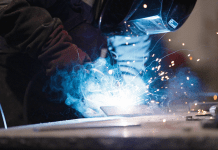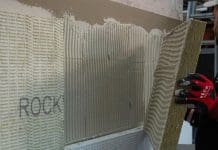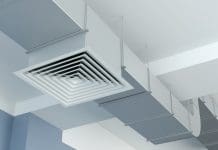Leonie Onslow, Executive Director at the British Urethane Foam Contractors Association asks if it is possible to meet zero carbon requirements and how existing housing will fare
Now that Building Regulations are firmly set to result in zero carbon emissions for new build housing by 2016 and for non-domestic buildings by 2019, this is really going to cause upheaval. How can these stringent standards be met and how can existing housing be brought up to similar standards?
The British Urethane Foam Contractors Association (BUFCA) advocates the use of sprayed or injected polyurethane foam. This can help meet current and future Building Regulations with superior insulation performance, air tightness, condensation control capabilities, and can also reduce carbon emissions. The application of polyurethane foam helps seal a building, providing a barrier to the ingress of airborne sound.
BUFCA is the national trade association representing the spray applied and injected polyurethane foam industry. The association has specialist installers who are expert in the installation of PU foam in a wide variety of applications. Material and equipment suppliers are also part of BUFCA.
Polyurethane foam can be installed to meet Building Regulations as wall insulation, roof insulation, floor insulation, or to fill voids and other areas providing a seamless, thermal insulation barrier. Other jointed systems give rise to a potentially weak point, leading to a significant loss of insulation value.
Existing buildings can also be brought up to high standards of thermal efficiency resulting in the lowering of fuel bills and a reduction in carbon emissions. The use of a high performance spray applied or injected polyurethane foam can substantially increase thermal performance.
There are still millions of existing homes with uninsulated cavity walls which could be brought up to high standards easily and effectively with injected polyurethane foam. The use of a high performance spray applied or injected polyurethane foam is often the most cost effective solution for cavities, including hard-to-treat housing.
These could be properties with narrow cavities, stone cavities, failing wall ties, or a metal frame or timber framed construction. Injected polyurethane foam systems bring these buildings up to much higher standards of energy efficiency. The insulation acts as a bond between the inner and outer leaves providing structural stability to the property.
The two-component liquid system produces a highly-efficient blanket of insulation with a thermal conductivity approximately twice as efficient as fibreglass. It is particularly cost-effective and easy to apply to a wide variety of substrates. Its closed-cell nature renders it very resistant to moisture ingress and grades are available which achieve both Class 1 and Class 0 fire ratings when tested to BS 476 Part 7 and 6 respectively. The urethane foam can be applied in any thickness to suit the insulation requirements of the building.
Spray-applied foam can be used to insulate and stabilise roofs (for instance in cases of nail fatigue), or as an energy efficient alternative to re-roofing. It has been used to stabilise pitched roofs in under-tile applications for over 40 years. Spray applied foam used in lofts meets Class 1 Surface Spread of Flame when tested to BS 476: Part 7 and with the addition of a specialist coating, can achieve Class 0. Air leakage can be reduced down to zero with in-situ applied polyurethanes.
Where polyurethane foam insulation is applied to an existing roof, this is subject to a site survey as the roof needs to be structurally sound prior to installation. A BUFCA installer will ensure that a survey is carried out and any remedial work is done before the installation of polyurethane foam.
Polyurethane foams are also resistant to flooding, and are therefore normally preferable over other materials which may have decreased insulation values once they are wet. These systems are approved under BBA certification for masonry cavity wall constructions in all exposure zones.
The objectives of BUFCA are to ensure that high standards are set and maintained within the industry, that installers coming into the industry are properly trained and monitored, and that installers adhere to the association’s Code of Professional Practice. Installers are expected to maintain high standards of quality and service to protect the industry’s credibility.
There is a twenty-five year insurance warranty which BUFCA installer members can offer for domestic and commercial injected polyurethane cavity wall insulation projects. The warranty offers reassurance to customers and becomes effective if there is a fault with the installation and the installer has ceased to trade or cannot honour the guarantee.
A series of technical datasheets are available at www.bufca.co.uk to help specifiers meet current Building Regulations, along with further information, or a brochure and list of installers.
Leonie Onslow
Executive Director
British Urethane Foam Contractors Association
Tel: 01428 870150













